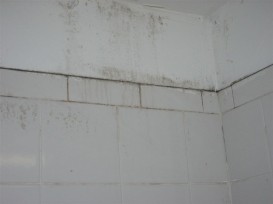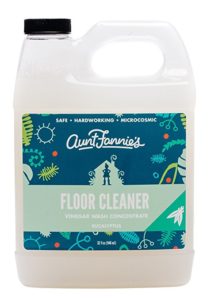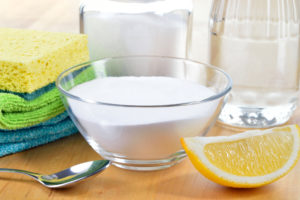
Apart from the fact that they’re smelly and unsightly, mold and mildew can be very unhealthy. According to the U.S. Environmental Protection Agency, breathing in mold spores can cause a variety of respiratory illnesses. Both mold and mildew can lead to headaches and nasal congestion and even trigger asthma attacks.
Mold and mildew build up in damp places, which is why you might find them in your basement or shower or on your shower curtain. But they won’t get a foothold if you follow these steps.
PREVENTION
Mold and mildew can’t grow where it’s dry, so the best way to keep them at bay is to reduce dampness.
- Crack open a window and start your ceiling fan when you turn on the shower so excess moisture moves out of the room, rather than condenses on the walls and tile. Keep the fan running and the window cracked open at least 15 minutes after you turn the shower off to let as much moist air escape as possible.
- Wipe down the shower and tub as soon as you’re finished. Keep a small squeegee in the shower so it’s convenient; you can get a squeegee very cheaply at a hardware store, home goods retailer, or online. Or, use a hand towel or washcloth to do the job. A cloth is particularly good at getting to the tile grout and in the corners where mold has a tendency to start.
- Use a shower curtain you can actually launder in the washing machine. That means, skip the vinyl or plastic in favor of cotton, hemp, or nylon. Wash it in hot water, run it through your machine’s spin cycle to remove excess water, then hang it up to dry in the shower. After every shower, wipe down the tile, let the fan run, and at some point, pull the shower curtain wide to let it air out.
- If you have a non-slip mat in your shower, you will need to pull it up and wash it down regularly. I’ve gotten rid of my shower mat because it was too much trouble to keep clean. If you want yours, you’ll have to wash it frequently. It helps to spray the back of it weekly with a solution of white vinegar and water, or tea tree oil and water.
- Use a terry cloth hand towel in the shower instead of a mat. Most of us have extra hand towels lying around. Or, pick up a few hand towels at a dollar store or when your department store is having a sale. Put the towel on the bottom of the shower or bath tub. It won’t slip, you’ll have traction, and when you’re finished, you can wring out the towel and let it dry, or throw it in the laundry.
- Keep your shower clean. Wash it down regularly with a good non-toxic cleanser, like baking soda and a plant-based liquid soap, or something like Bon Ami, which is essentially pulverized rock. Use a mop and a stepladder to reach the ceiling above the shower if needed. Dry it with a rag or towel when you finish washing it.
- Fix leaky faucets and showerheads. Stop the drips to limit mold and mildew around drains.
- Install a dehumidifier in the basement. You can adjust the appliance to remove as much humidity from your space as you need. Empty the water collection bucket frequently – in the summer, I need to empty mine almost every day. If convenient, you can use the collected water to water your plants. You can usually eep the dehumidifier bucket clean by washing it out with hot soapy water and wiping away any mold or mildew that might be building up.Remember this true adage: An ounce of prevention is worth a pound of cure. The more you do to prevent mold and mildew from building up, the better off you’ll be.
TREATMENT

- Make a spray of water and vinegar, tea tree oil or hydrogen peroxide, using between one and two tablespoons of the product for every cup of water you add to the spray bottle (experiment a bit to see what works in your situation; you may need up to a 50% vinegar/50% water solution). You can add fresh squeezed lemon juice minus the pulp to sweeten up the smell of the vinegar. If using vinegar or hydrogen peroxide, spray the potion directly on the spotty areas, leave them alone for 10 or 15 minutes, and then rinse. Dry with a rag you don’t mind throwing away. If using tea tree oil, which is more expensive but is supposed to be more effective, spray the cleanser on the tile or shower stall and leave it overnight. Run the fan and open the window to keep air circulating and to counter the smell from the vinegar or tea tree oil. Reapply as soon as you see the mold reappear.
- If the grout in your shower can’t be thoroughly cleaned out, you may need to replace the grout. If this is too much to do on your own, you can find a professional service to replace the grout for you. Get a price estimate before you commit to the work. It may be a little pricey, but probably cheaper than dealing with health problems that could result from living with mold and mildew.
MAINTENANCE
Getting rid of the mold and mildew in your shower doesn’t mean you can be less vigilant. Inspect the shower and shower curtain once a week to make sure you’re staying mold and mildew-free. Wash the shower curtain regularly to keep it fresh. Wipe down the tile or shower stall each time you finish using it, and don’t forget to keep the window open and the fan going to reduce moisture build-up.
















